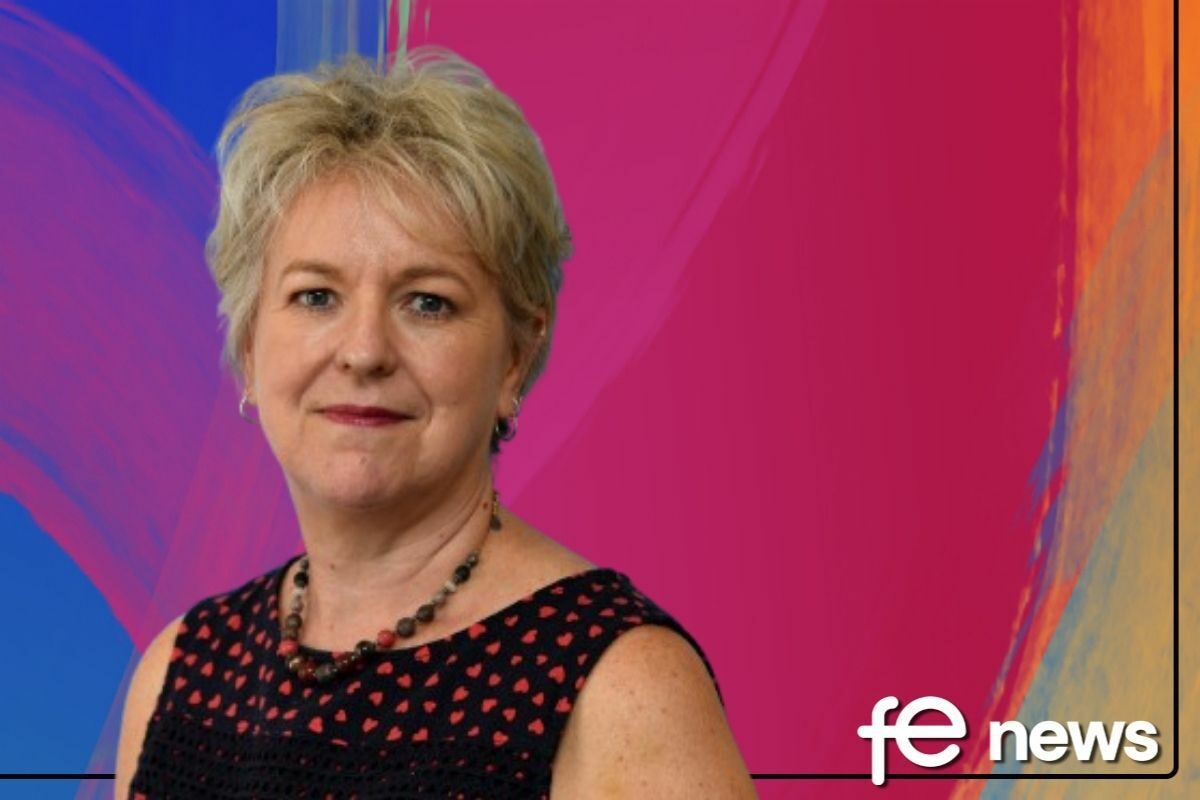Teach in further education
What is further education
Further education (FE) is for learners who want to:
learn a skill or trade
study a vocational subject
develop their professional career
take post-16 academic studies
study as part of an apprenticeship
take adult learning courses in basic English, maths and other entry level courses
As a teacher in FE you could teach a diverse set of learners, including young people and adults.
If teaching a skill or trade, you’ll spend more time in practical settings such as workshops rather than in a classroom.
How to get into FE teaching
To teach in FE, you’ll need:
skills, knowledge and experience in your subject
the willingness to work towards a teaching qualification (or have one already)
Ideally you’ll have industry experience. For some providers, it is preferable for you to have a relevant trade qualification, usually at level 3. You can find out more information about what qualification levels mean.
You’ll also need level 2 maths and English skills. If you do not have these qualifications, FE providers might want to assess your knowledge and skills. They may support you to improve your maths and English skills as part of your training.
It will be expected that those who train on the job or in their own time will be working towards completing either a teaching qualification or a level 5 FE teaching apprenticeship.
Train on the job
There is no specific entry path to becoming a teacher in FE. One way is to apply for a teaching job with an FE provider that can support you to train on the job.
You can start work as an FE teacher as soon as you can get a job with an FE provider. When you apply for a job, FE providers will look for:
knowledge of your subject
experience of your industry
practical skills you’ve learnt in your career
Benefits of training on the job
This may be the best approach if:
you want to start teaching in FE soon
there is a suitable job available at a local college or training provider
you do not want to pay for teacher training yourself
The provider may support you to study, for example:
a level 5 FE teaching apprenticeship
The qualification you work towards will be decided by your employer. Find out more about what qualification levels mean.
If you prefer to train before starting a new role, you can do your teacher training in your own time around your commitments.
Once you have completed your training you can apply for any suitable jobs.
This may be the best approach if:
you do not want to be tied-in to any one provider once you’ve qualified
you want to get a taste for FE before you commit to teaching in it
You may be eligible to apply for a student loan to help pay for the course fees and living expenses. Find out about student finance.
Bursaries
Depending on your subject, you may be able to get a tax-free bursary with your teacher training course.
FE teacher training bursaries are worth £12,000 to £26,000 over the length of the course.
For example, if the course is 2 years in length, a £26,000 bursary would amount to £13,000 per year.
A set number of bursaries are released each year. Your course provider will let you know if you are eligible. Find out about bursaries available for 2022 to 2023.
Where you could work
Places where FE teachers work include:
colleges
independent training providers (ITPs)
adult community learning
workplaces
prisons
FE is not the same as:
university
secondary school, including school sixth forms
Colleges
There are many types of colleges including general colleges, sixth form colleges, land-based colleges and national specialist colleges. Colleges offer a wide range of courses, both vocational and academic, and you may teach a wide variety of full-time and part-time students.
Independent training providers (ITPs)
ITPs are typically a part of the private or charity sector, with many working closely with employers to deliver work-based courses.
Adult community learning includes a range of community-based and outreach learning opportunities. This type of learning is managed and coordinated by local authorities and their partners to deliver adult education and training courses.
Workplaces
Some companies deliver in-house training which allows them to support their staff through their qualifications.
Prisons
Courses are normally available to help prisoners gain new skills, for example learning to read and write, use computers, or do basic maths.
What you could teach
FE providers teach a huge range of courses, from social care to construction.
Often the subjects taught reflect the needs of the local economy.
The courses taught include:
GCSEs
T levels (new qualifications in technical subjects, broadly equivalent to 3 A levels)
BTECs
apprenticeships
entry level courses
Professions, vocations and trades
There are many subjects taught in FE. The best way of discovering them is to explore your local FE provider websites.
Here’s a sample list of sectors covered by FE teaching:
agriculture, environment and animal care
business, administration and office management
catering and hospitality
childcare and education
construction
creative and design
digital and IT
emergency and armed services
engineering and manufacturing
hair and beauty
health and life sciences
legal, finance and accounting
sales, marketing and procurement
social care
transport and logistics
Academic subjects
You could teach subjects like:
English
maths
science
social sciences
humanities
modern foreign languages
art and design
performing arts
Some FE providers require you to have a degree in the subject you want to teach.
Benefits of working in FE
FE providers are independent employers and may offer a range of benefits, in addition to salary packages.
These may include:
pension schemes
childcare vouchers
cycle to work schemes
support with travel costs
This is not a complete list. You can find what each FE provider offers on their website.
FE providers like colleges and training providers can:
set their own entry requirements in terms of qualifications or prior experience needed to teach in FE
have their own pay structure and other terms and conditions
This means that you will need to make your own assessment of any FE provider you consider applying to work for.
Like colleges, some ITPs will provide teacher training on the job. ITPs may differ from colleges in other ways, and could:
be industry or sector specific
have a more commercial focus
have a greater use of remote working
Working hours
A full-time FE teacher is typically contracted to 35 to 37 hours a week. Some teaching occurs in the evening, so the working day may vary.
Many FE teachers work part-time or flexible hours to fit around other commitments.
Look at job vacancies on FE job boards or providers’ websites to gain an idea of how flexible jobs in FE can be.
Holidays
As an employee you are entitled to paid holidays.
Term-based holidays mean college-based FE teachers typically get 37 days’ paid leave per year, plus all bank holidays.
ITPs do not usually follow academic terms, so annual leave can usually be taken at any time.
The amount of leave offered varies by provider.
Find a teaching qualification
Teacher training is not linked to your subject. Instead, it will help you gain the specific teaching skills you need to best share your skills, knowledge and experience with your students.
The college or training provider will arrange this for you when you start a job with them.
Teacher training courses vary by:
cost
duration
minimum qualification requirements
What qualifications are available
Qualification
Entry requirements
What you’ll achieve
Diploma in Education and Training
Level 3 in your subject
Level 5 Diploma in Education and Training
Certificate in Education
Level 3 in your subject
Level 5 Certificate in Education
Professional Graduate Certificate in Education
Level 4 in your subject
Level 6 Professional Graduate Certificate in Education
Postgraduate Certificate in Education
A degree or equivalent qualification
Level 7 Postgraduate Certificate in Education
These qualifications are good if you want to:
complete teacher training part-time or on the job
get a full teaching qualification
These are not the best qualifications if you want to:
teach in secondary schools
teach in sixth forms in secondary schools
Course structure
Typically, full-time study will involve at least 100 hours of teaching practice, including 50 in your chosen area if you are on a specialist pathway. You can do this over 1 year if studying full-time or 2 years if part-time.
Teaching status
Following the course, you will be eligible to apply for Qualified Teacher Leaning and Skills status (QTLS).
Cost
This varies by provider, but is usually between £6,000 and £9,250. You can have this funded by a student loan or by your provider.
Non-teaching roles
There are many other roles in addition to teaching in FE, which includes working as a:
technician
teaching assistant
learning support assistant
These sorts of jobs are advertised on FE providers’ websites, and on general job finder websites.
Where to find a job
The first place to look for a job is on your local college or training provider’s website.
Other places to look include:
Association of Colleges job site
FE Jobs – Further Education job site
College Jobs
Education Week Jobs
FE Careers – Further Education careers site
Times Educational Supplement (TES) job site
job sites such as Indeed, TotalJobs and Reed
The Department for Education does not endorse any particular providers or job sites.
Got a question about finding a job in FE?
Call our advisors on 0800 389 2502. Lines are open Monday to Friday 9am to 5:30pm.
If you prefer, you can email us instead at [email protected].











Responses